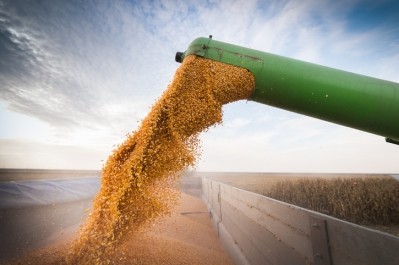Inventory grows for US soy, wheat but corn stocks go lower

The World Agricultural Supply and Demand Estimates report released Thursday (February 8) by the US Department of Agriculture (USDA) shows that, globally, ending stocks in oilseeds, including soybeans, and coarse grains, and corn are expected to fall.
“Global oilseed stocks are projected lower with reduced soybean stocks for Argentina, Bolivia, Paraguay, and India more than offsetting an increase for the US."
Global corn ending stocks, at 203.1m tons, are reduced by 3.5m from January.
“Foreign corn ending stocks are down from last month, mostly reflecting reductions for Argentina and Ukraine that more than offset increases for Mexico, Brazil, and Turkey."
Wheat details
US wheat ending stocks for 2017/18 were increased by 20m bushels based on a reduction in exports, said the USDA.
“Based on NASS [US National Agricultural Statistics Service] prices reported to date and price expectations for the rest of the marketing year, the projected season-average farm price (SAFP) remains unchanged at the midpoint of $4.60 per bushel,” the department said.
“However, the projected SAFP range is narrowed by 5 cents at both ends of the range to $4.55 to $4.65.”
Globally, wheat supplies for 2017/18 increased based on higher expected production for Argentina and Ukraine.
“Argentina’s wheat production increased by 500,000 tons to 18m based on higher-than-expected yields from the later harvest stages,” reported the USDA. “Ukraine wheat production increased 481,000 tons to 27m based on updated government data.”
Trade
International trade is expected to see a boost in terms of a growth in exports from Russia, Argentina and Canada, which will offset the drop in exports from the US and the EU. Imports are expected to increase for Indonesia, by about 1m tons, and for several countries in Africa.
However, several regions, including India, the EU, Iran, Mexico and Brazil are predicted to see a drop in imports, the department said.
“Total world consumption is projected 3.1 million tons higher, primarily on greater usage from Indonesia and China,” the department said. “Projected global ending stocks are 1.9m tons lower this month at 266.1m but remain significantly higher than a year ago.”
Corn and soy specifics
Competitive pricing is one factor improving the outlook for US corn in 2017/18, said the USDA. The expectation is for increased exports and reduced stocks.
Exports were increased by 125m bushels and ending stocks were dropped by the same amount, the department said.
There also has been a reduction in exports from Argentina and Ukraine. “The season-average corn price received by producers is projected at $3.30 per bushel, up 5 cents at the midpoint."
Globally, trade predictions for 2017/18 include increased export from the US and Brazil, and an increase in imports for Turkey, the EU and Brazil.
Foreign ending stocks dropped from last month – primarily reflecting the drop in production expectation for the Ukraine and Argentina.
“For Argentina, persistent heat and dryness during January and early February reduced yield prospects for early-planted corn in key central growing areas,” the department added.
Global ending stocks are expected to be about 203.1m tons, a drop of 3.5m from last month’s forecast, said the department.
“Global coarse grain production for 2017/18 is projected 2.3m tons lower to 1.322bn,” the department reported. “This month’s foreign coarse grain outlook is for lower production, greater consumption, and lower stocks relative to last month.”
Barley production in Argentina is anticipated to increase and sorghum production in Mexico has been expanded.
Like wheat, US soybeans are expected to see a drop in exports and growth in ending stocks, said the USDA.
“Soybean exports for 2017/18 are projected at 2.1bn bushels, down 60m from last month, reflecting shipments and sales through January and increased export competition on larger supplies in Brazil.
“With soybean crush unchanged, soybean ending stocks are raised 60 million bushels to 530m.”
The season average price for soybeans in 2017/18 is forecast to range from $8.90 to $9.70, the department said. However, meal prices were predicted to range from $305 to $335 a short ton – an increase of $5 at the midpoint.
Global soybean production
Global soybean production in 2017/18 has been reduced by 1.7m tons to an estimated 346.9m tons, the department said.
“Soybean production for Brazil is projected at 112m tons, up 2m, as favorable weather throughout the growing season has raised yield prospects,” the department said. “Argentina production is reduced 2m tons to 54m on lower harvested area and reduced yields resulting from periods of unseasonable warmth and dryness.”
However, Argentina was not the only country expected to see a drop in soybean production, yields are also forecast to drop for Paraguay, Bolivia, India, Ukraine and South Africa, the department said.
Oilseed crush globally for 2017/18 is expected to drop to about 487.5m tons based on a reduction in Argentina and India, the department said. Global oilseed stocks also are expected to fall with reduced stocks in Argentina, Bolivia, Paraguay and India offset the increase in the US.












